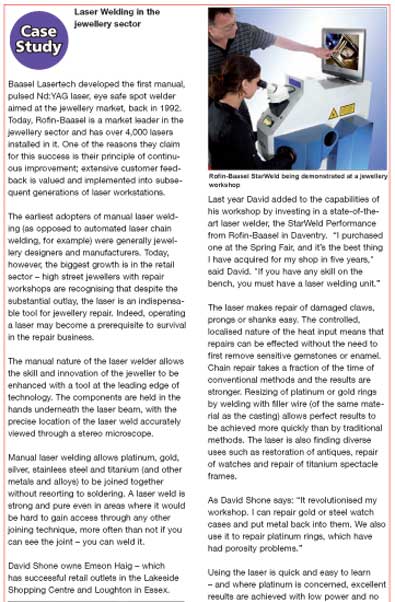

Baasel Lasertech developed the first manual, pulsed Nd:YAG laser, eye safe spot welder aimed at the jewellery market, back in 1992. Today, Rofin-Baasel is a market leader in the jewellery sector and has over 4,000 lasers installed in it. One of the reasons they claim for this success is their principle of continuous improvement; extensive customer feedback is valued and implemented into subsequent generations of laser workstations.
The earliest adopters of manual laser welding (as opposed to automated laser chain welding, for example) were generally jewellery designers and manufacturers. Today, however, the biggest growth is in the retail sector – high street jewellers with repair workshops are recognising that despite the substantial outlay, the laser is an indispensable tool for jewellery repair. Indeed, operating a laser may become a prerequisite to survival in the repair business.
The manual nature of the laser welder allows the skill and innovation of the jeweller to be enhanced with a tool at the leading edge of technology. The components are held in the hands underneath the laser beam, with the precise location of the laser weld accurately viewed through a stereo microscope.
View Document (233Kb)
Copyright of ©2008 AILU
We make every effort to trace copyright. If inadvertently we have not attributed copyright or attributed it incorrectly, please contact us using our webform or by emailing dlm@ailu.org.uk and we will rectify the situation.
Disclaimer
To view disclaimer details click here